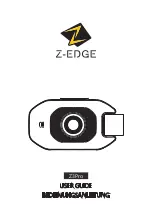
VCC-16MV02
Rev.905-0163-00
©2018 CIS Corporation. All rights reserved.
27
ch1
ch2
ch3
ch4
ch5
ch6
ch7
ch8
(0,0) (1,0) (2,0) (3,0)
(0,1) (1,1) (2,1) (3,1)
・・・
・・・
・・・
・・・
(4,0) (5,0) (6,0) (7,0)
(4,1) (5,1) (6,1) (7,1)
・
・
・
・
・
・
・
・
・
・
・
・
・
・
・
・
・
・
・
・
・
・
・
・
□
The registerable number of defective pixels and the correctable number of defective pixels may not be always the
same.
(1)
With white defects detection, if one of the strip reed reached the maximum number, correction could not be
performed. In such case, the data up to that point are registered, error is output, and operation ends.
(2)
If no effective pixel exists up next to the next, down next to the next, right next to the next, or left next to the
next, to the pixel to be corrected, this pixel can be registered but cannot be corrected.
For example, when X1, X2, X3, and X4 are already registered as defected pixels, X can be
added to be registered but it cannot be corrected.
□
White Defects Detection by the users. (Address 100)
This is the function to register the pixels automatically if a pixel exceeds the level specified by the user.
Please be noted that no lights should be in the sensor surface to use this function.
There are two kinds of parameters for commands.
The first parameter: Threshold (0 ~ 1023)
The data with luminance level more than the specified level here shall be registered.
※
For 8bit image, 4 times value of the image signal level shall be specified as the
threshold value.
The second parameter: Additional Flag (0, 1)
When 0 is specified, all of user’s white defects data registered by that time are cleared
out, and data will be newly registered.
When 1 is specified, only newly detected white defects data will be added to the old data
registered by that time.
Even when the Additional Flag 0 is specified, the added data with the Address 101 would not be deleted.







































